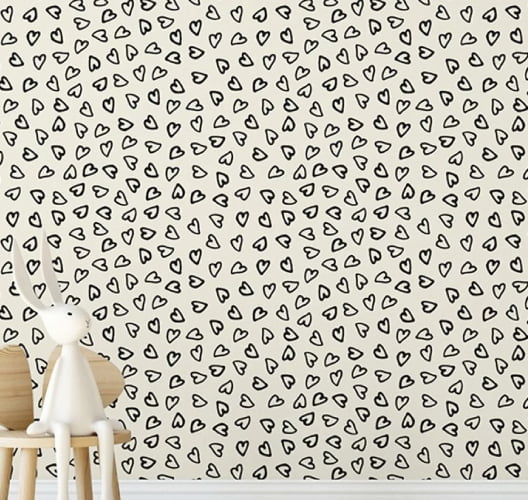
Welcome to A Guide to Cleaning and Maintaining Framed Wallpaper Panels! Framed wallpaper panels can be a great way to add a decorative touch to any room, but they do require a bit of extra care to keep them looking their best. In this guide, we will provide you with some tips and tricks on how to clean and maintain your framed wallpaper panels and keep them looking as good as new. We will also explain the different types of wallpaper available to you and which type is best for your needs. Finally, we will discuss the best way to hang your panels to ensure they stay in place and look their best for years to come. Thanks for joining us and we hope you find this guide helpful.
Tools for Cleaning and Maintaining Framed Wallpaper Panels
Cleaning and maintaining framed wallpaper panels is an essential part of keeping your home looking beautiful and up-to-date. To properly maintain wallpaper panels, there are a few key tools you will need to have on hand. A vacuum cleaner is one of the most important tools you will need to have. A vacuum cleaner with a brush attachment is best for removing dust, dirt, and other debris from wallpaper panels. Additionally, you will need a soft cloth and mild detergent, a ladder or step stool, and a mild, non-abrasive cleaner made specifically for wallpaper.

Preparing the Wallpaper for Cleaning
Before cleaning and maintaining your wallpaper panels, you will need to prepare the wallpaper and frame. First, carefully remove any dust or dirt from the frame with a vacuum and brush attachment. Next, inspect the wallpaper for any damage or tears, and carefully repair any areas that are damaged. Finally, use a soft cloth and mild detergent to gently wipe down the wallpaper and remove any dirt or residue that may be present.
Once you have prepared the wallpaper for cleaning, it is time to clean it. Use a mild, non-abrasive cleaner specifically made for wallpaper and a soft cloth to gently clean the wallpaper. Be sure to avoid scrubbing the wallpaper, as this can cause damage to the wallpaper. Additionally, you may want to apply a protective coating to the wallpaper to help protect it from dirt and debris.
Tips for Removing Stains from Wallpaper
If you have stains on your wallpaper, there are a few different methods you can use to remove them. For light stains, you may be able to simply use a damp cloth and mild detergent to remove the stain. For more stubborn stains, you may need to use a spot cleaner made specifically for wallpaper. Always test the spot cleaner on a small, inconspicuous area of the wallpaper before using it on the stain.
If your wallpaper has been damaged, you may need to repair it. Depending on the severity of the damage, you may be able to simply patch the damaged area, or you may need to replace the entire panel. For minor damage, you can use wallpaper paste and a small brush to patch the damaged area. For larger areas, you may need to use a wallpaper repair kit.
Replacing Wallpaper Panels
If you need to replace a wallpaper panel, you will need to carefully remove the old panel and install the new one. Start by carefully removing the old panel and make sure to save any screws or other hardware that may have been used to attach it to the wall. Next, measure the new panel and cut it to size, if necessary. Finally, use wallpaper paste and a brush to attach the new panel to the wall.
To protect wallpaper from fading due to sunlight, you may want to consider investing in some window treatments or shades. This will help to reduce the amount of direct sunlight that hits the wallpaper and help keep it from fading over time. Additionally, you can also use a UV protectant spray specifically designed for wallpaper to help protect it from the sun’s harmful rays.
Maintaining the Wallpaper’s Color and Finish
To keep the color and finish of your wallpaper looking its best, you will need to periodically clean and dust the wallpaper. Use a soft cloth and mild detergent to gently wipe down the wallpaper, and use a vacuum and brush attachment to remove dust and dirt. Additionally, you may want to consider applying a protective coating to the wallpaper to help protect it from dirt and debris.
The frame of your wallpaper panels will also need to be cleaned and maintained. Start by carefully removing any dust or dirt with a vacuum and brush attachment. Next, use a soft cloth and mild detergent to gently wipe down the frame. Finally, you may want to apply a protective coating to help protect the frame from dirt and debris.
Storing Wallpaper Panels Safely
If you need to store your wallpaper panels for any length of time, make sure to store them in a cool, dry place. Additionally, make sure to wrap the panels in protective material, such as wax paper or bubble wrap, to protect them from dirt and dust. Finally, make sure to label the panels so that you know which room they belong in, and which way the pattern should be facing when you hang them.
Conclusion
The use of framed wallpaper panels as a decorating element can add a unique touch to any room in the home. With proper care and maintenance, framed wallpaper panels can last for many years. Cleaning and maintaining framed wallpaper panels requires regular dusting, occasional washing, and spot cleaning of any stains. Keeping the panels dry, and avoiding any sharp objects or abrasive materials can also help keep the wallpaper looking its best. With the right tools and care, framed wallpaper panels can be an excellent addition to any home.
Resource Link:
https://en.wikipedia.org/wiki/Wall_panel
https://www.printshape.com/wallpaper-panels/

Bethany Donovan is an experienced digital native from Kansas. She is passionate about all things tech related, and spends her free time researching the latest trends and innovations in the industry. Bethany has worked in the IT field for over 10 years, and currently works in an IT support role for a local government entity. She also runs her own blog for tech enthusiasts, sharing her insights and advice on topics from basic technology setup to complex software development.





